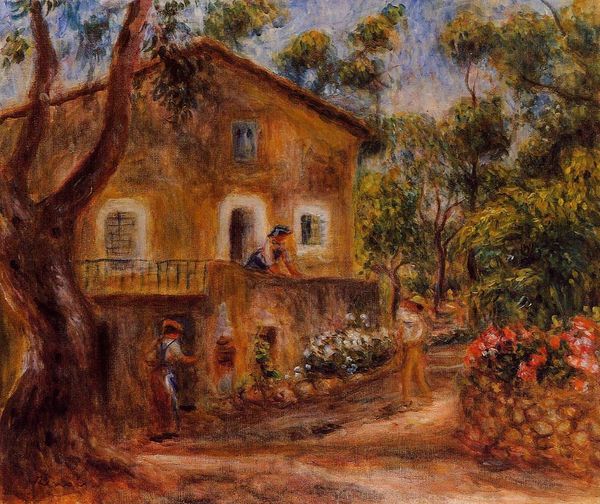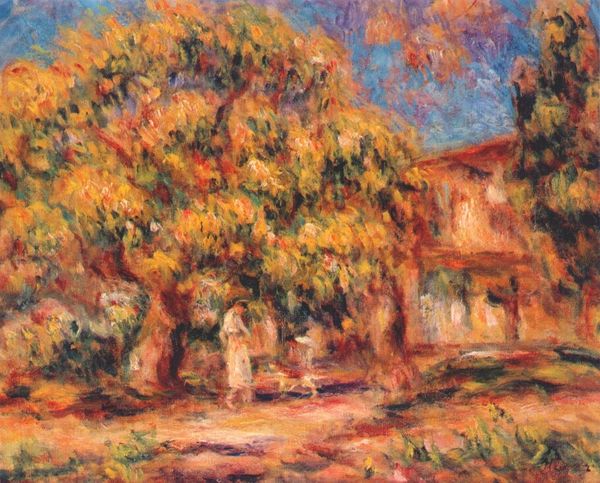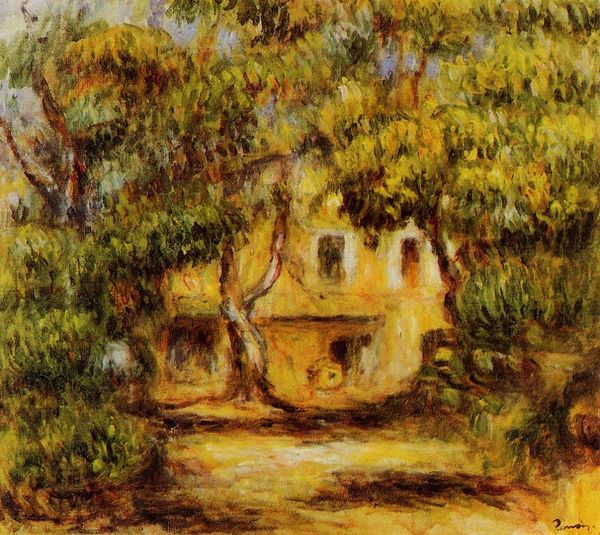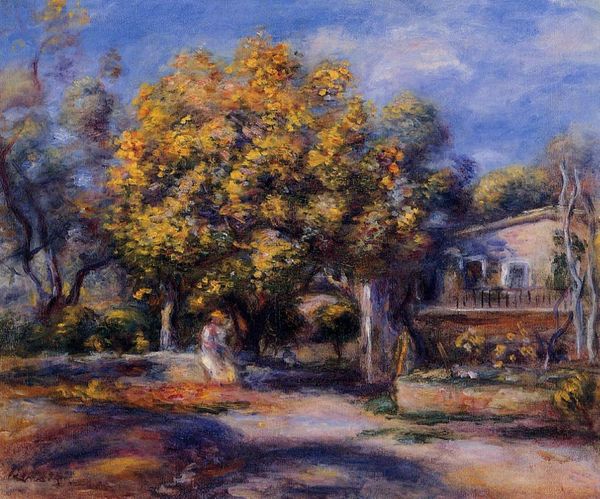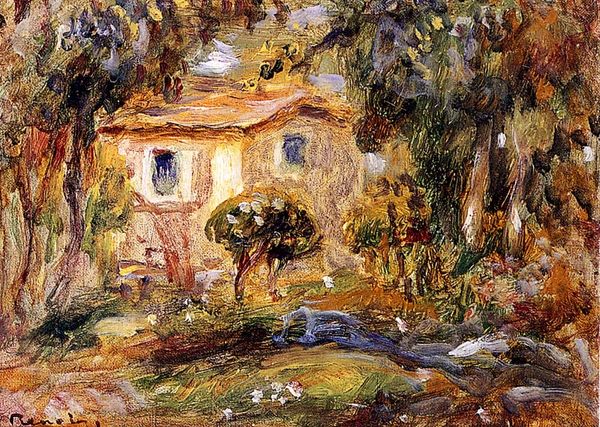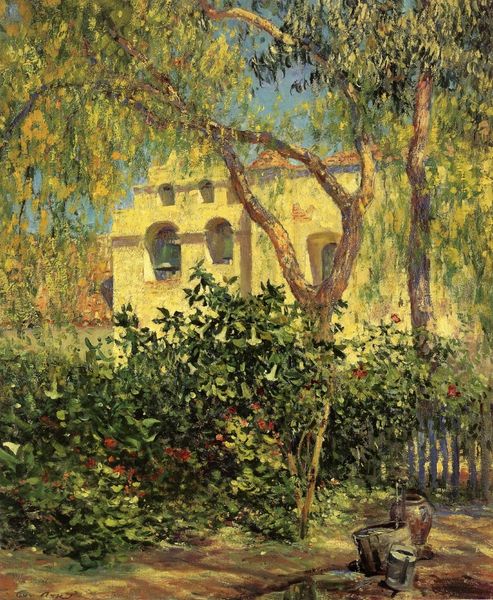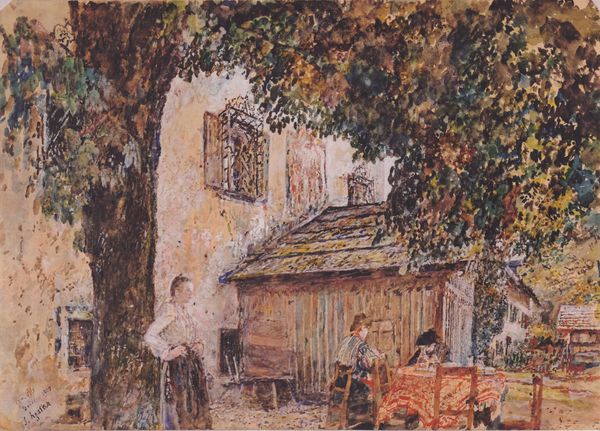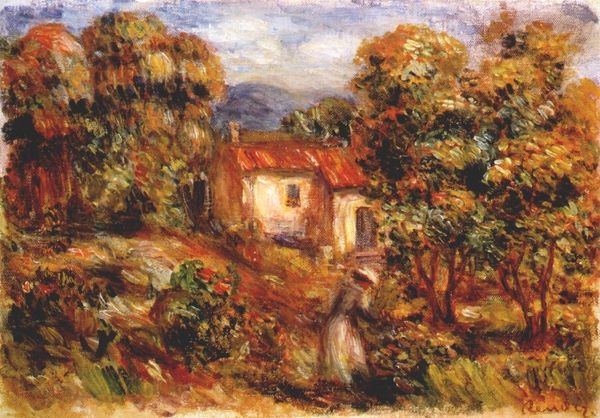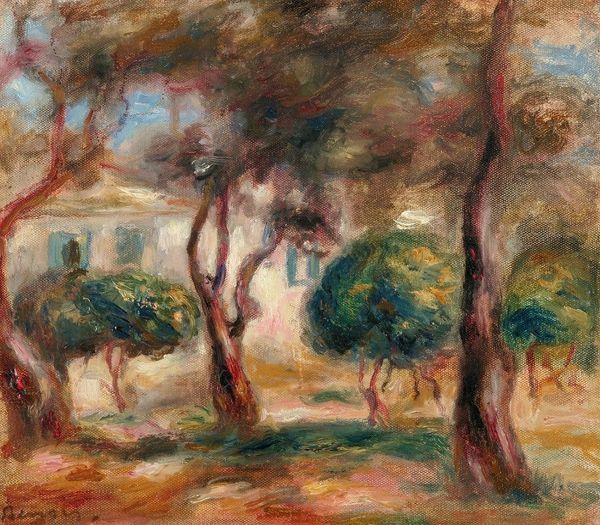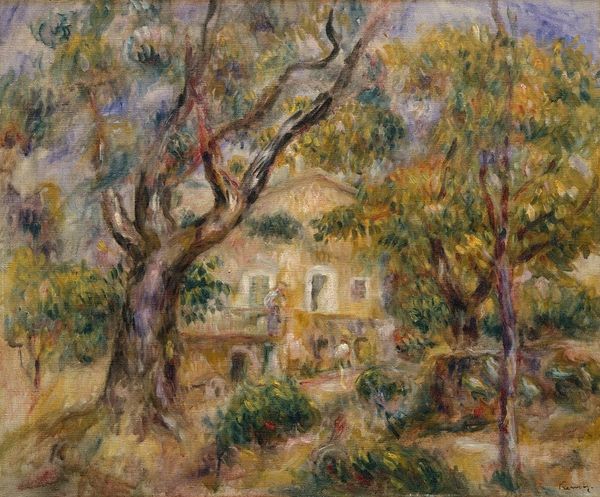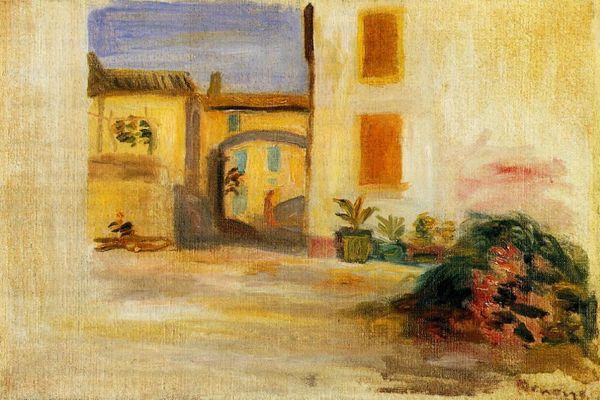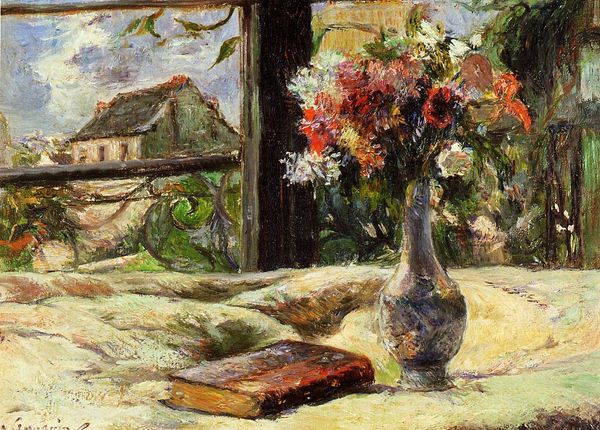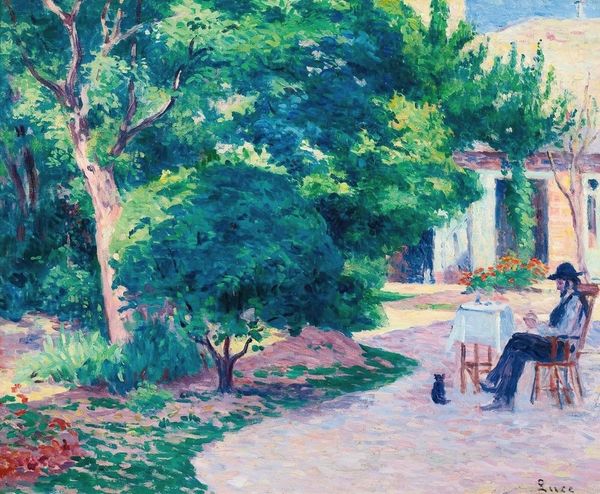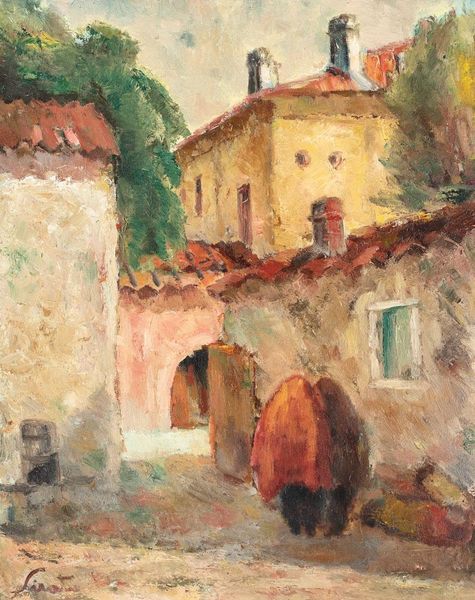
#
abstract painting
#
impressionist landscape
#
possibly oil pastel
#
oil painting
#
fluid art
#
acrylic on canvas
#
underpainting
#
painting painterly
#
watercolour illustration
#
watercolor
Copyright: Public domain
Curator: This is "The Farm," a 1914 landscape rendered in oil by Pierre-Auguste Renoir. What strikes you immediately? Editor: A certain… domesticity? The whole scene radiates a feeling of gentle containment. You’ve got the solid architecture softened by that lush foreground. Curator: Note the placement of the figures, they're integral to how we read the setting. There’s almost a casual arrangement suggesting harmony between the human inhabitants and their cultivated surroundings. Do you find it idealistic? Editor: Maybe deliberately so. It presents a rural existence insulated from the anxieties of a rapidly changing world, particularly in 1914, just as the First World War was erupting. Who benefits from such a narrative, then and now? Curator: Perhaps, it reflects a longing for a more simplified existence. Beyond the idyllic quality, Renoir returns to a favorite symbolic theme with an embracing tree. What might that represent to him, psychologically? Editor: Symbolically, the farm and the figures, bathed in warm, consistent sunlight, do hint at continuity— a comforting image of the family sustained by the land. But what does that ideal exclude, in terms of labor or access to resources? Curator: Good point. Let’s also observe how Renoir blurs distinctions, painterly technique overriding specific representation of materials and forms. This adds a layer of timelessness, I believe, lifting it somewhat outside the immediate sociopolitical reality. Editor: But isn’t that the issue? Sanitizing the complexities of rural life and reinforcing perhaps a romantic and ultimately inaccurate narrative. Even the brushstrokes lean into this dreamlike, softened vision. Curator: Still, "The Farm" invites contemplation, doesn’t it? We consider human existence interwoven with the cycles of nature, reflected through light and color. Editor: Yes. And by acknowledging its inherent idealism, we reveal not just what’s presented on the canvas but what the artwork conceals about labor and reality, particularly in its historical moment. A worthy reflection indeed. Curator: Indeed. Looking closely invites that richer analysis.
Comments
No comments
Be the first to comment and join the conversation on the ultimate creative platform.
